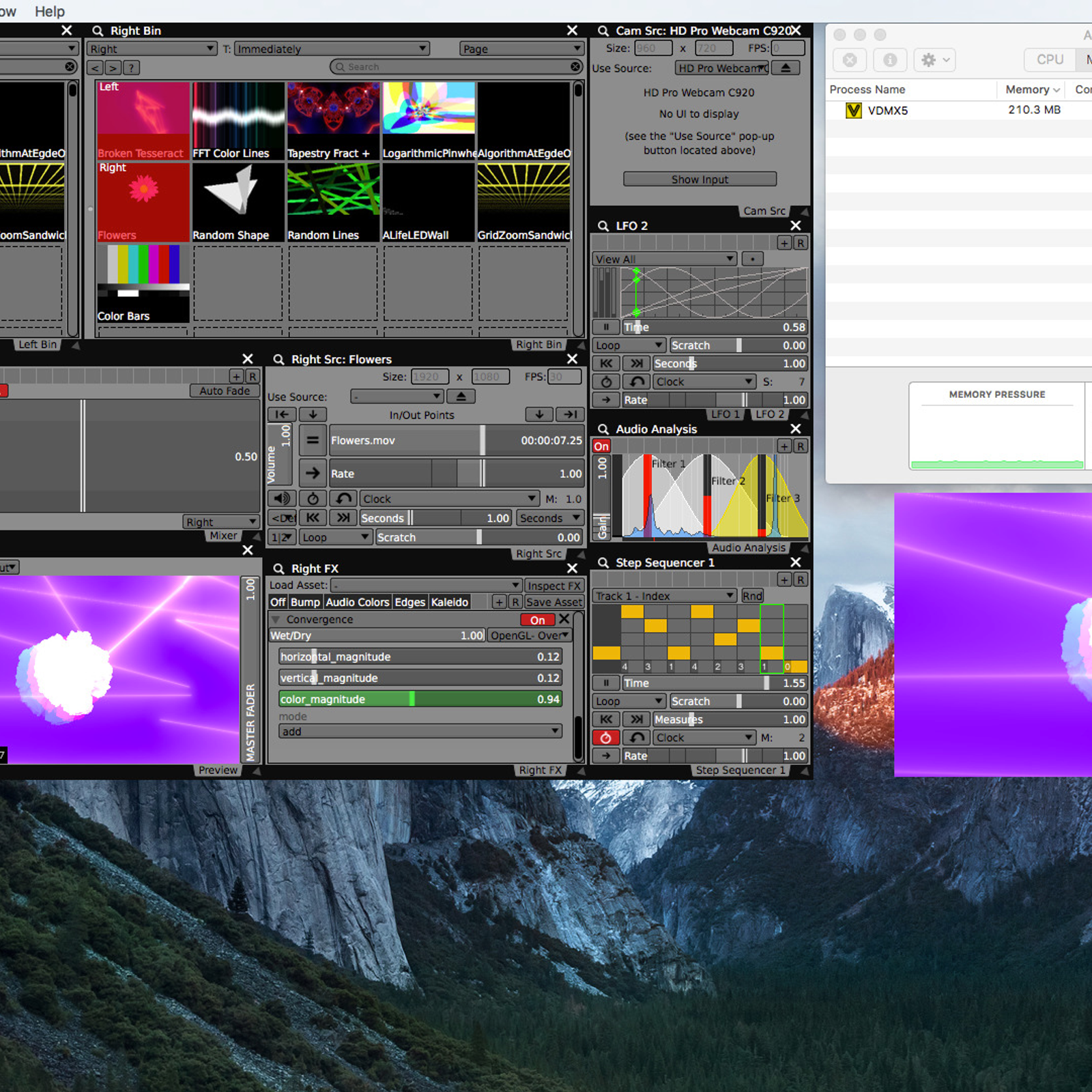Intouch Error Exception Caught For Viewinitialize

Troubleshoot the TPM. 7 minutes to read.In this articleApplies to. Windows 10. Windows Server 2016This topic provides information for the IT professional to troubleshoot the Trusted Platform Module (TPM):.With TPM 1.2 and Windows 10, version 1507 or 1511, you can also take the following actions:.For information about the TPM cmdlets, see. About TPM initialization and ownershipStarting with Windows 10, the operating system automatically initializes and takes ownership of the TPM. This is a change from previous operating systems, where you would initialize the TPM and create an owner password.
Lightroom portable reddit. 301 Moved Permanently.
The application has a Button, which generates Exception, three RadioButton to demonstrate the exception on various scenario and one CheckBox to invoke the Exception from inside a Non-UI thread. If you run the application, you will see the first RadioButton gives you a MessageBox that it is handled within the block which generates the Exception.
Troubleshoot TPM initializationIf you find that Windows is not able to initialize the TPM automatically, review the following information:.You can try clearing the TPM to the factory default values and allowing Windows to re-initialize it. For important precautions for this process, and instructions for completing it, see, later in this topic.If the TPM is a TPM 2.0 and is not detected by Windows, verify that your computer hardware contains a Unified Extensible Firmware Interface (UEFI) that is Trusted Computing Group-compliant. Also, ensure that in the UEFI settings, the TPM has not been disabled or hidden from the operating system.If you have TPM 1.2 with Windows 10, version 1507 or 1511, the TPM might be turned off, and need to be turned back on, as described in. When it is turned back on, Windows will re-initialize it.If you are attempting to set up BitLocker with the TPM, check which TPM driver is installed on the computer. We recommend always using one of the TPM drivers that is provided by Microsoft and is protected with BitLocker. If a non-Microsoft TPM driver is installed, it may prevent the default TPM driver from loading and cause BitLocker to report that a TPM is not present on the computer. If you have a non-Microsoft driver installed, remove it and then allow the operating system to initialize the TPM.Troubleshoot network connection issues for Windows 10, versions 1507 and 1511If you have Windows 10, version 1507 or 1511, the initialization of the TPM cannot complete when your computer has network connection issues and both of the following conditions exist:.An administrator has configured your computer to require that TPM recovery information be saved in Active Directory Domain Services (AD DS).
This requirement can be configured through Group Policy.A domain controller cannot be reached. This can occur on a computer that is currently disconnected from the network, separated from the domain by a firewall, or experiencing a network component failure (such as an unplugged cable or a faulty network adapter).If these issues occur, an error message appears, and you cannot complete the initialization process. To avoid this issue, allow Windows to initialize the TPM while you are connected to the corporate network and you can contact a domain controller. Troubleshoot systems with multiple TPMsSome systems may have multiple TPMs and the active TPM may be toggled in UEFI.
Windows 10 does not support this behavior. If you switch TPMs, Windows might not properly detect or interact with the new TPM. If you plan to switch TPMs you should toggle to the new TPM, clear it, and reinstall Windows. For more information, see, later in this topic.For example, toggling TPMs will cause BitLocker to enter recovery mode. We strongly recommend that, on systems with two TPMs, one TPM is selected to be used and the selection is not changed. Clear all the keys from the TPMYou can use the Windows Defender Security Center app to clear the TPM as a troubleshooting step, or as a final preparation before a clean installation of a new operating system. Preparing for a clean installation in this way helps ensure that the new operating system can fully deploy any TPM-based functionality that it includes, such as attestation.
However, even if the TPM is not cleared before a new operating system is installed, most TPM functionality will probably work correctly.Clearing the TPM resets it to an unowned state. After you clear the TPM, the Windows 10 operating system will automatically re-initialize it and take ownership again. WarningClearing the TPM can result in data loss. For more information, see the next section, “Precautions to take before clearing the TPM.” Precautions to take before clearing the TPMClearing the TPM can result in data loss. To protect against such loss, review the following precautions:.Clearing the TPM causes you to lose all created keys associated with the TPM, and data protected by those keys, such as a virtual smart card or a login PIN.
Make sure that you have a backup and recovery method for any data that is protected or encrypted by the TPM.Do not clear the TPM on a device you do not own, such as a work or school PC, without being instructed to do so by your IT administrator.If you want to temporarily suspend TPM operations and you have TPM 1.2 with Windows 10, version 1507 or 1511, you can turn off the TPM. For more information, see, later in this topic.Always use functionality in the operating system (such as TPM.msc) to the clear the TPM.
Do not clear the TPM directly from UEFI.Because your TPM security hardware is a physical part of your computer, before clearing the TPM, you might want to read the manuals or instructions that came with your computer, or search the manufacturer's website.Membership in the local Administrators group, or equivalent, is the minimum required to complete this procedure.To clear the TPM.Open the Windows Defender Security Center app.Click Device security.Click Security processor details.Click Security processor troubleshooting.Click Clear TPM.You will be prompted to restart the computer. During the restart, you might be prompted by the UEFI to press a button to confirm that you wish to clear the TPM.After the PC restarts, your TPM will be automatically prepared for use by Windows 10.Turn on or turn off the TPM (available only with TPM 1.2 with Windows 10, version 1507 or 1511)Normally, the TPM is turned on as part of the TPM initialization process. You do not normally need to turn the TPM on or off. However, if necessary you can do so by using the TPM MMC. Turn on the TPMIf you want to use the TPM after you have turned it off, you can use the following procedure to turn on the TPM.To turn on the TPM (TPM 1.2 with Windows 10, version 1507 or 1511 only).Open the TPM MMC (tpm.msc).In the Action pane, click Turn TPM On to display the Turn on the TPM Security Hardware page. Read the instructions on this page.Click Shutdown (or Restart), and then follow the UEFI screen prompts.After the computer restarts, but before you sign in to Windows, you will be prompted to accept the reconfiguration of the TPM.
Hi.For the past few days, I've been opening my laptop to see a quick flash of this error, which immediately closes just as soon as it pops up. However, after I put my computer on sleep and wake it up, the error message stays. Below is the Exception Text, etc.So what exactly do I do here? I haven't had much experience with dealing with these kinds of errors before, and I'll admit I am a little worried.My Laptop is an MSI with an i7 processor.Thank you for taking the time to read this.See the end of this message for details on invokingjust-in-time (JIT) debugging instead of this dialog box. Exception Text.System.Configuration.ConfigurationErrorsException: Configuration system failed to initialize - System.Configuration.ConfigurationErrorsException: '.' , hexadecimal value 0x00, is an invalid character.
Line 10, position 1. (C:UsersPolyWubAppDataLocalMSISCM.exeUrlzv0ikcohnhzptbjtykvepncdk0ijftla.0user.configline 10) - System.Xml.XmlException: '.' , hexadecimal value 0x00, is an invalid character. Hello,Based on the information you have provided in your post; we need to do further investigation. To assist you better, we'd like to know the following:. Did you make any significant hardware or software changes on your PC prior to this issue?.

Which version of Windows 10 is currently installed? To check, click the Start menu and go toSettings System About, then check theVersion. What troubleshooting steps have you done so far?In the meantime, let's try to perform clean boot and check if the issue persists.This is done to start Windows by using a minimal set of drivers and startup programs. Also, it helps eliminate software conflicts of an update or when you run a program in Windows. Check thisand look for the steps on how to perform a clean boot. Remember to choose the operating system that you're using.Note:After clean boot troubleshooting steps, refer to the section ' How to reset the computer to start as usual after troubleshooting with clean boot' in the provided link to return your computer to Normal startupmode.We'll wait for your update.
I have not made any major hardware/software changes recently aside from updating Windows regularly.Windows 10 Version: 1709I have not gone through troubleshooting at all, because the option has not come up in the dialogue box. I have also not been able to find any valid choice for troubleshooting in the troubleshooting tool. (Looked at them all, and no problems were detected).I have started with a clean boot and narrowed it down to a program called 'SCM.exe' I'm not entirely sure what this is. Hi,SCM.exe is a type of an executable file related to your operating system. If this would be the cause of the issue, it's possible that your system files have been corrupted. We suggest following the steps in this link. That article will guide you in running the System File Checker tool to scan any system file corruption and possibly fix them.
As well with the DISM tool to possibly fixwhat SFC can't.Let us know the results and if you have any other questions, don't hesitate to post back.I would like to apologize for the very delayed response, as I have been busy lately.I tried using the SFC and DISM commands as the guide instructed, but the command prompt indicated that nothing was wrong.I then restarted my computer, which did not show the unhandled exception error message, but after returning to my computer after it entered sleep mode, the error appeared once more.Thank you again for your time and patience.